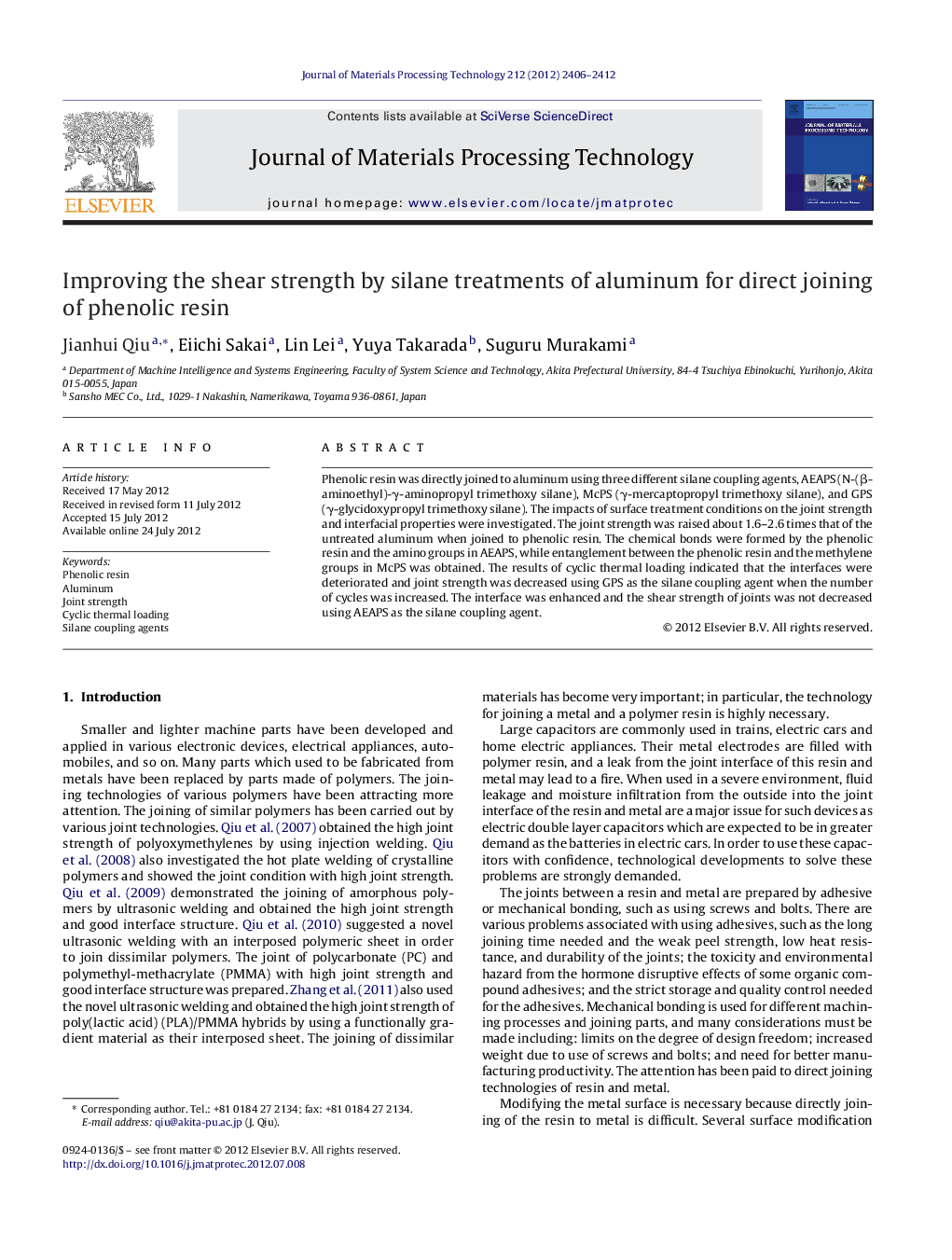| Article ID | Journal | Published Year | Pages | File Type |
|---|---|---|---|---|
| 798187 | Journal of Materials Processing Technology | 2012 | 7 Pages |
Phenolic resin was directly joined to aluminum using three different silane coupling agents, AEAPS (N-(β-aminoethyl)-γ-aminopropyl trimethoxy silane), McPS (γ-mercaptopropyl trimethoxy silane), and GPS (γ-glycidoxypropyl trimethoxy silane). The impacts of surface treatment conditions on the joint strength and interfacial properties were investigated. The joint strength was raised about 1.6–2.6 times that of the untreated aluminum when joined to phenolic resin. The chemical bonds were formed by the phenolic resin and the amino groups in AEAPS, while entanglement between the phenolic resin and the methylene groups in McPS was obtained. The results of cyclic thermal loading indicated that the interfaces were deteriorated and joint strength was decreased using GPS as the silane coupling agent when the number of cycles was increased. The interface was enhanced and the shear strength of joints was not decreased using AEAPS as the silane coupling agent.
► The phenolic resin was directly joined to aluminum using a silane coupling agent. ► The impacts of surface treatment conditions on the joint strength was investigated. ► The joint strength was improved about 1.6–2.6 times than that of the untreated.
